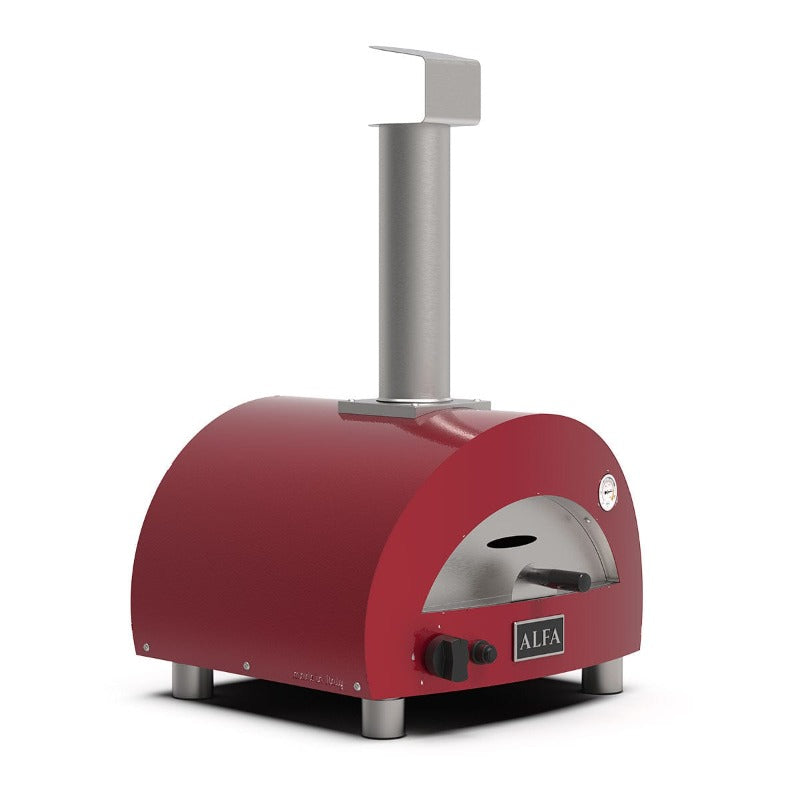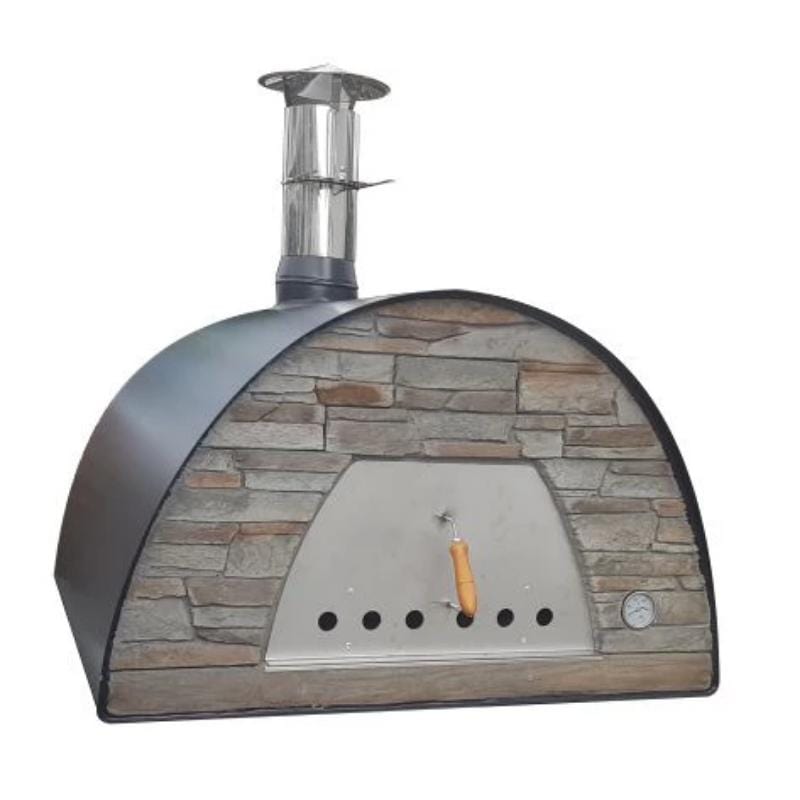Some customers give us a call after their first few oven fires because they see cracks appearing on their brick wood-fired oven. First, just know that your authentic brick oven will show signs of cracking. However, it won't crack like the blog post cover if you go through the curing process and care for your oven properly.
Why Do Ovens Get Outside Dome Cracks?
When authentic ovens are built, moisture is trapped in the layers of brick, mortar, cement, or clay. When you cure your oven, you create small fires to allow the heat to slowly rise thus pushing the water out of the oven dome. As the heat rises, the moisture in the oven materials will turn to steam and attempt to escape the oven walls quickly.

It is best to make curing a slow process to minimize cracking but, due to the process, superficial cracks will still occur. While some traditional ovens may crack more than others, these superficial cracks create no structural damage and your oven will live for a long and prosperous life.
Here's the deal...
While larger cracking in your brick oven may mean the fires started in the oven were too hot over too fast a timeframe,many times you will get larger cracks even when doing everything perfectly. It's the physics of brick ovens and the bricks used to make them. Keeping your fires low and slow is the best policy during the curing process.
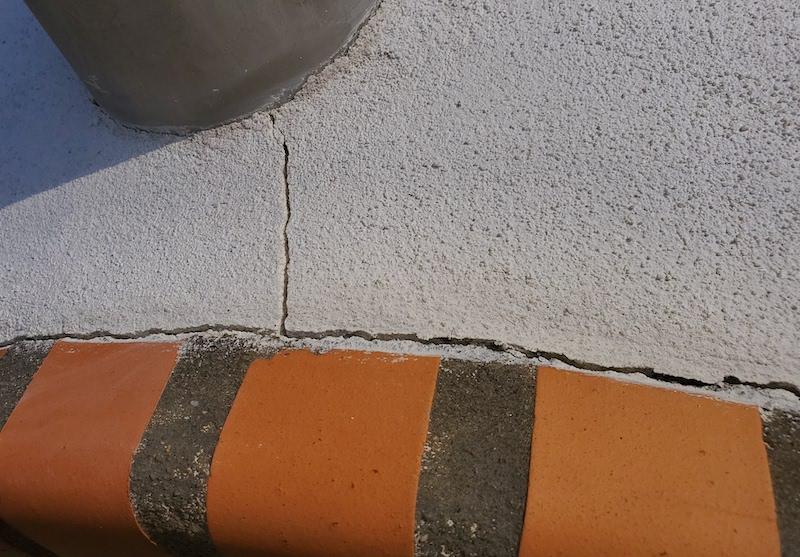
It is best to use your oven for a couple of months to allow it to crack where it will before you repair, paint, tile, or stucco. Just as you may patch and repaint cracks in your home over the years, your oven may require the same care and maintenance over time. But like all luxuries, it will be totally worth it!
What About Inside Oven Brick Cracks?
If the bricks inside your oven dome crack, it's not the end of the world. If your handmade oven is triple-insulated like our brick ovens from Authentic Pizza Ovens, your oven will continue to hold heat and cook perfectly.
When building the Authentic Pizza Ovens brick wood-fired ovens, the craftsmen begin with a layer of brick and mortar, which is then covered with refractory cement. A thick layer of Rockwool insulation is applied and held down with metal batting before an additional layer of refractory cement is applied.
So, on the inside, there is so much mortar that cracks in the brick or mortar won't allow the heat won't escape. If your inside brick or mortar crack, you could lightly brush the inside to clean any loose mortar.
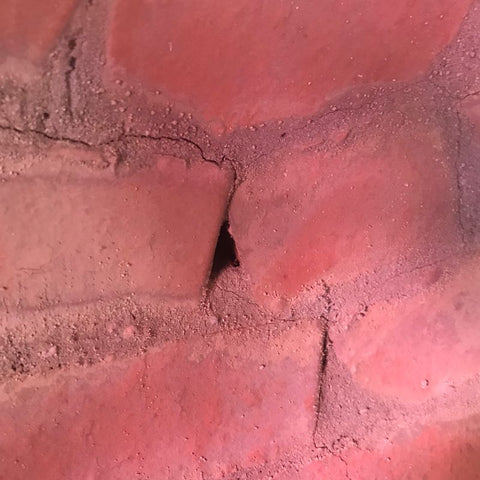
What If My Oven Face Cracks?
Sometimes your brick oven face can crack. Creating blazing hot fires before properly curing your oven can result in cracks on your oven face as can normal firings. If your oven face cracks, you can use high-heat clear silicone to fill the crack. Remember that all cracks will expand when the oven is hot and then close up when the oven cools.

Covering your oven when not in use is the best practice. Since water can re-enter the oven walls or arch via rain, that moisture will again try to escape with subsequent firings potentially causing more cracking. For this reason, you should keep your oven covered when not in use or go through the curing process again if your oven was affected by rain or snow.
Weather and Brick Ovens
Brick ovens are sturdy stalwarts in any backyard’s culinary arsenal, but even these tough appliances are sensitive to the elements. In order to keep your backyard oven working for a long time, here are some facts about how weather can impact your brick oven’s longevity and a few tips on protecting it from Mother Nature’s wrath!
Water is the worst
Here at Patio and Pizza, we’ve noticed a common thread in most of the questions we get about pizza oven problems. Most of the time, the cause of a worn or ruined wood-fired oven is simply the presence of water. At its best, your oven will show many more signs of decay. At its worst, your oven may fall completely apart.

As pointed out by construction industry professionals Building Solutions, masonry materials such as brick are porous and can absorb moisture from rain, snow, and even water vapor in the air. Once moisture enters brick, it will expand and contract in conjunction with changes in temperature.
This is of particular concern to pizza ovens since their temperature changes both substantially and quickly. The expansion and contraction of water inside the brick can lead to cracking or even structural failure of the oven if the water is present in large amounts. However, moisture-induced disaster is not inevitable...
Starting off strong
Our best advice for any outdoor oven owner is to cure your oven before your first use. We outlined how to cure your oven in a previous blog post, and it’s a simple process that will save you a lot of tears in the future. Curing your oven involves the use of controlled, slowly increased heat that evaporates the moisture inside your oven at a rate that dries your oven out instead of damaging it.
A proper cure removes most of the water from your oven’s masonry that may have seeped in during construction, shipping, and the idle time your oven might have spent in wet environments. This prevents the catastrophic cracks that one might see cooking in an uncured oven, such as those depicted in our previous post about dome cracks.
It’s also worth noting that some small cracking should be expected if you cook in your oven a lot; however, if your oven was correctly cured and any damage you see doesn’t affect the oven’s operation, you can safely assume in most cases that these cracks are just signs of a well-loved oven that can be worn as a badge of honor or repaired if you wish.
Protecting your oven
Now that we’ve covered how moisture can affect your oven and discussed how early preventative measures are important first steps, let’s move on to how you can protect your oven from the inevitable effects of the elements.
While there is no way to perfectly waterproof a brick oven, good moisture maintenance can be followed without too much work. Our recommendation is to cover your brick oven while it’s not in use. A good covering will stop egregious amounts of moisture from damaging your oven, especially if you live in an area that gets a lot of precipitation.
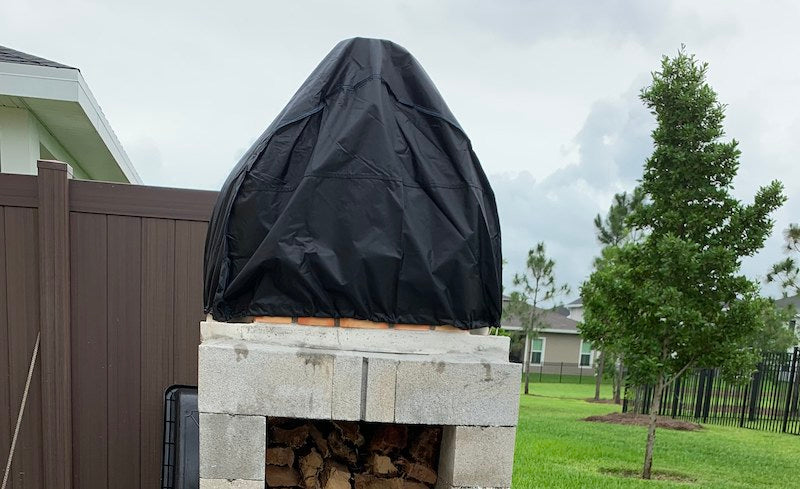
However, covering your oven is primarily effective against visible moisture; humidity in the air can still seep into your oven while it’s not in use. Here is where a rinse-and-repeat method works best: Regularly curing your oven, after rainy seasons or snow-filled winters, will ensure that you remove the bulk of the moisture that has built up in your oven between uses so that you don’t unintentionally superheat a soggy oven and crack your dome in the process.
If you have any other questions about oven maintenance, cooking tips, or even delicious recipes, don’t hesitate to ask in the comments or through our contact page! We’d love to hear from you!
For cover options for your outdoor pizza oven, check out our accessories collection.
How To Repair Pizza Oven Cracks
If you're a perfectionist at heart, oven cracks may annoy you. But, as you will find, cracks in a traditional European oven dome simply means the oven has been used to its full potential. Cracks are the sign of a seasoned oven.
It may be best to make inner peace with oven cracks and assume that periodically minor repair will be necessary. If not, you may want to consider a steel wood-burning oven that will never crack.
If you just can't stand it and want to repair the brick pizza oven cracks, you can smooth over the cracks using similar material (ie, refractory cement, mortar, clay) or use the Ultrafire Repair Kit to fill the cracks.
Related Blog Posts
How To Care For Your Pizza Oven


